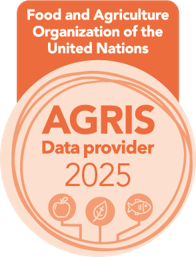Assessment of morphological and nutritional attributes of two varieties of Ipomoea batatas (L.) utilized in Nigeria
Abstract
Morphological and nutritional studies were carried out on various parts of the two varieties of Ipomoea batatas (white fleshed TIS 87/0087 and orange fleshed UMUSPO/3) to determine their morphological and nutritional characteristics using standard techniques. Analysis of variance was employed for data analysis. Result revealed that the two varieties had similar qualitative morphological features but showed variation in their length, breadth, colour and girth. The result of the proximate analysis revealed that the nutrients were present in all the parts of the two varieties investigated but in varied proportions. Protein, fat and ash were highest in the leaves of both varieties when compared to other parts (12.13±0.20mg/100g, 3.92±0.14mg/100g and 2.85±0.06mg/100g of I. batatas respectively. Moisture and carbohydrate were highest in the tubers of both varieties when compared to other parts (10.73±0.22mg/100g and 81.22±3.80mg/100g) respectively while crude fiber was highest in the stem of the two varieties when compared to other parts (26.15±0.29mg/100g). Data obtained indicated that these parts of the two varieties contained appreciable amount of nutrients which could be included in diets to supplement our daily nutrient needs and animal feed. Apart from the tuber eaten by our people, other parts of the plant should also be used as food. Overall data could be a viable tool for sweet potato breeding as an improvement in sweet potato production. Morphological characteristics observed were similar indicating that the two varieties are phyllogenetically related. The data could also be used to enhance proper taxonomic characterization and identification of the species I. batatas.
Keywords:
Characteristics, Ipomoea batatas, Morphological, Nutritional, TaxonomyDownloads
Published
How to Cite
Issue
Section
Copyright (c) 2020 Agriculture and Environmental Science Academy

This work is licensed under a Creative Commons Attribution-NonCommercial 4.0 International License.

